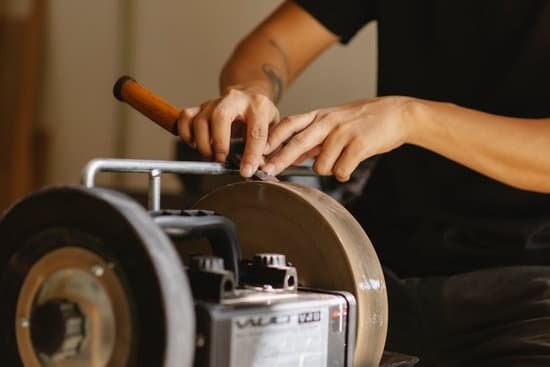Woodworking is a rewarding and fulfilling hobby, but it also comes with its own set of risks. From flying wood chips to sawdust and harsh chemical fumes, woodworking can pose serious threats to your eyes. This is where the importance of safety goggles in woodworking comes into play. Safety goggles are an essential piece of protective gear that can prevent eye injuries and keep you safe while working with wood.
In this article, we will discuss the significance of prioritizing safety in woodworking and specifically focus on the role of safety goggles in ensuring eye protection. We will delve into the different types of safety goggles available for woodworking, provide tips on choosing the best pair for your needs, as well as offer advice on proper fit and maintenance. Additionally, we will share real-life stories of woodworking accidents that have been prevented by wearing safety goggles.
As any experienced woodworker will tell you, safety should always be a top priority in any woodworking project. Without further ado, let’s explore the world of woodworking safety and discover how safety goggles can make a difference in protecting your most valuable sensory organs – your eyes.
Understanding the Importance of Safety Goggles in Woodworking
Woodworking is a rewarding and fulfilling hobby or profession, but it also comes with its fair share of risks. Flying wood chips, sawdust, and other debris can pose a serious threat to your eyes if proper precautions are not taken. This is where safety goggles for woodworking come into play. These protective eyewear are designed specifically to shield your eyes from potential hazards in the workshop.
- Prevents eye injuries: Safety goggles create a barrier between your eyes and any flying debris or particles that may result from woodworking activities.
- Protection from harmful chemicals: In addition to physical hazards, safety goggles also provide protection against harmful chemical splashes from wood stains, paints, and varnishes commonly used in woodworking.
- Reduce risk of long-term damage: Even small wood particles or debris can cause serious eye injuries if they make contact with your eyes. Safety goggles can help prevent these incidents and reduce the risk of long-term damage.
When working with power tools such as saws, drills, and sanders, the likelihood of wood chips and debris flying into the air increases significantly. This makes safety goggles an essential piece of protective gear for woodworkers of all skill levels.
Wearing safety goggles for woodworking may seem like an inconvenience at first, but the potential consequences of not wearing them far outweigh any minor discomfort they might cause. Prioritizing your eye safety in the workshop should be non-negotiable, and investing in a good pair of safety goggles is an important step towards ensuring just that.
Types of Safety Goggles for Woodworking
When it comes to woodworking, safety should always be a top priority. One essential piece of personal protective equipment (PPE) that woodworkers should always have on hand is a good pair of safety goggles. These goggles are designed to protect the eyes from flying debris, sawdust, and other potential hazards that may arise during woodworking projects.
There are several types of safety goggles available for woodworking, each with its own unique features and level of protection. The most common types include direct vent, indirect vent, and non-vented goggles. Direct vent goggles have ventilation slots or perforations around the body of the goggle to allow air flow, while indirect vent goggles have covered vents to protect against liquid splash. Non-vented goggles provide sealed protection against liquids, dust, and gases.
It’s important to select the right type of safety goggles based on the specific woodworking tasks at hand. For example, if working with chemicals or finishing products, non-vented goggles would be the best choice for protecting the eyes from potential splashes or fumes.
On the other hand, when dealing with sawdust and flying debris from cutting and sanding wood, direct vent or indirect vent goggles are more suitable for providing adequate airflow while still keeping the eyes protected. No matter which type of safety goggles are chosen for woodworking, ensuring a proper fit and comfort is crucial for overall effectiveness in preventing eye injuries.
| Type | Description |
|---|---|
| Direct Vent Goggles | Goggles with ventilation slots or perforations around the body to allow air flow |
| Indirect Vent Goggles | Goggles with covered vents to protect against liquid splash |
| Non-Vented Goggles | Goggles that provide sealed protection against liquids, dust, and gases |
How to Choose the Best Safety Goggles for Woodworking
When it comes to woodworking, safety should always be a top priority. One of the essential safety gear for woodworkers is a pair of high-quality safety goggles. With so many options available in the market, choosing the best safety goggles for woodworking can be overwhelming. However, taking into account certain factors can help you make an informed decision.
Material and Durability
The first thing to consider when choosing safety goggles for woodworking is the material and durability. Look for goggles made from impact-resistant materials such as polycarbonate or acrylic. These materials are not only lightweight but also sturdy enough to protect your eyes from flying wood chips, dust, and other debris commonly found in a woodworking environment.
Visibility
Another crucial factor to consider is visibility. Opt for safety goggles with anti-fog and scratch-resistant coatings to ensure clear vision while working on your woodworking projects. Additionally, choose goggles with wide lenses that provide better coverage and minimize blind spots.
Comfort and Fit
Comfort plays a significant role in ensuring that you will actually wear your safety goggles while woodworking. Look for goggles with adjustable straps and cushioned frames that provide a snug and comfortable fit. It’s also essential to ensure that the goggles sit securely on your face without slipping or causing any discomfort during extended use.
By considering these factors – material and durability, visibility, comfort, and fit – you can choose the best safety goggles for woodworking that prioritize both your safety and comfort as you pursue your passion for woodworking projects.
Proper Fit and Adjustment of Safety Goggles
Importance of Proper Fit
When it comes to safety goggles for woodworking, getting the right fit is crucial. Ill-fitting goggles can easily slip off during work, leaving your eyes vulnerable to potential hazards such as flying wood chips or dust. The right fit ensures that the goggles stay in place, providing continuous protection for your eyes.
Adjustment Tips
To ensure a proper fit, it’s essential to adjust the straps of the safety goggles accordingly. The straps should be comfortably snug without being too tight, and the goggles should sit securely on your face without obstructing your vision. Additionally, some safety goggles come with adjustable features such as nose bridges and temple arms, allowing for a customized fit for different facial shapes and sizes.
Ensuring Comfort
In addition to the fit, comfort is also an important factor when it comes to safety goggles for woodworking. Look for goggles with soft padding around the eyes and a comfortable nose piece to minimize discomfort during extended wear. It’s worth trying on different styles and brands to find a pair that not only fits properly but also feels comfortable for long periods of use.
By prioritizing proper fit and adjustment of safety goggles for woodworking, you can ensure maximum protection for your eyes while minimizing any discomfort or distractions during woodworking tasks. Remember, investing in the right pair of safety goggles is an investment in both your eye health and overall well-being in the workshop.
Tips for Maintaining and Cleaning Safety Goggles
Proper maintenance and cleaning of safety goggles are crucial to ensure that they provide the best possible protection for your eyes during woodworking. Here are some tips to help you keep your safety goggles in top condition:
- Use a soft, clean cloth: When cleaning your safety goggles, avoid using rough or abrasive materials that could scratch the lenses. Instead, use a soft, clean cloth to gently wipe away any dirt, dust, or debris.
- Use a mild soap solution: If your safety goggles have stubborn stains or residue on them, you can use a mild soap solution to clean them. Simply mix a small amount of mild soap with water, then dip the cloth in the solution and carefully wipe the lenses.
- Avoid harsh chemicals: It’s important to avoid using harsh chemicals like ammonia or bleach when cleaning your safety goggles, as these can damage the lenses and frame. Stick to mild soap and water for the best results.
- Store them properly: When you’re not using your safety goggles, be sure to store them in a clean, dry place where they won’t get scratched or damaged. Consider using a protective case to keep them safe when not in use.
By following these simple tips for maintaining and cleaning your safety goggles, you can help ensure that they continue to provide optimal protection for your eyes while woodworking. Remember that proper maintenance is key to getting the most out of your safety gear and keeping yourself safe in the workshop.
Real-Life Stories of Woodworking Accidents Prevented by Safety Goggles
Safety goggles are an essential piece of personal protective equipment when it comes to woodworking. They protect the eyes from flying wood chips, sawdust, and other debris that could cause serious injury. Understanding the importance of safety goggles in woodworking can be illustrated through real-life stories of accidents that were prevented by wearing them.
One woodworker, John, was working on a lathe when a small piece of wood flew off and hit him right in the eye. Fortunately, he was wearing his safety goggles at the time, which absorbed the impact and prevented any damage to his eye. Without the goggles, John could have suffered from serious eye injury or even permanent vision loss.
Another woodworker, Sarah, was using a power sander without wearing safety goggles. A small particle of wood bounced back and struck her in the eye, causing a scratched cornea. This painful experience led Sarah to always wear safety goggles whenever she is working with power tools in her workshop.
It’s important to recognize that these real-life stories highlight the potential dangers of woodworking and how safety goggles can make a crucial difference in preventing severe eye injuries. These incidents emphasize the significance of prioritizing safety in woodworking and always wearing appropriate protective gear such as safety goggles.
| Woodworker | Accident |
|---|---|
| John | Hit in the eye by a piece of wood while using a lathe |
| Sarah | Scratched cornea from a particle of wood while using a power sander |
Conclusion
In conclusion, it is clear that safety should always be a top priority in woodworking, and safety goggles play a crucial role in protecting the eyes from potential hazards. From the various types of safety goggles available to the proper fit and adjustment, woodworkers have a range of options to ensure their eyes are well-protected during their projects.
It is important for every woodworker to understand the risks involved and to take necessary precautions, with the use of safety goggles being non-negotiable.
Choosing the best safety goggles for woodworking requires careful consideration of factors such as lens material, ventilation, and impact resistance. Proper maintenance and cleaning of safety goggles are also essential to ensure their effectiveness over time. Real-life stories serve as powerful reminders of how safety goggles have prevented serious eye injuries, highlighting their vital role in woodworking.
Woodworkers must continually prioritize their safety by investing in high-quality safety goggles and adhering to best practices for their use. By doing so, they can confidently pursue their passion for woodworking while minimizing the risk of accidents or injuries. The simple act of wearing safety goggles can make all the difference in preserving vision and preventing potentially life-altering incidents in the workshop.
Frequently Asked Questions
What Are the Eye Protection to the Wood Workers?
Eye protection is crucial for woodworkers to prevent eye injuries from flying wood particles, dust, and debris. Safety glasses with side shields or goggles are recommended to provide adequate protection.
Do You Need Goggles for Woodworking?
Yes, goggles are essential for woodworking to protect the eyes from flying wood chips, sawdust, and other potential hazards. They provide a secure and snug fit to prevent any particles from entering the eyes.
What Are Safety Glasses in Woodworking?
Safety glasses in woodworking are specially designed eyewear that shields the eyes from debris, dust, and other potential dangers in the workshop. They are often made of impact-resistant materials to provide adequate protection while working with wood.

Hi everyone! I’m a woodworker and blogger, and this is my woodworking blog. In my blog, I share tips and tricks for woodworkers of all skill levels, as well as project ideas that you can try yourself.





